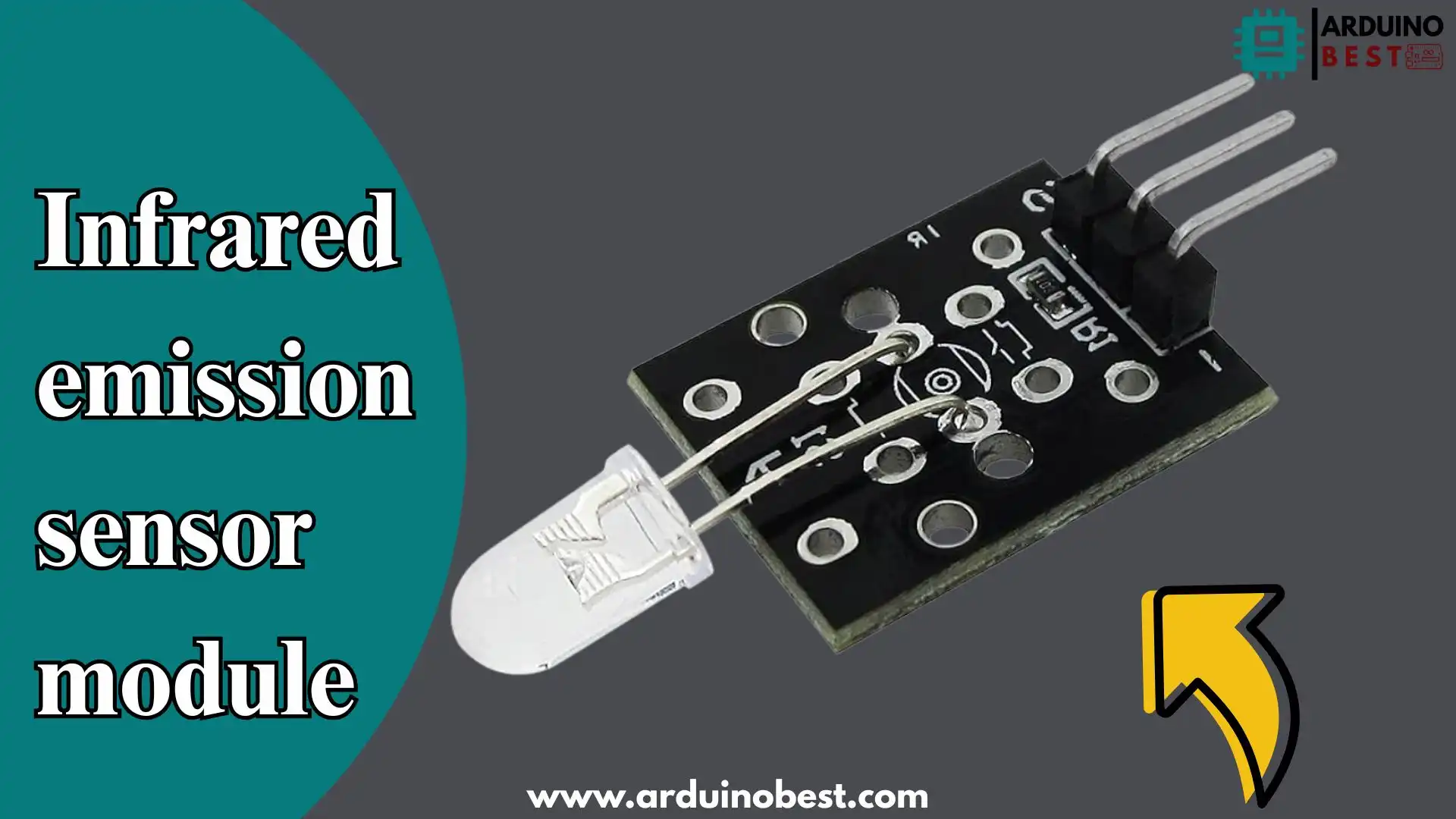Table of Contents
Infrared emission sensor modules are key components used in a variety of electronic systems, offering non-contact detection and communication capabilities. These sensors operate by emitting infrared radiation, which is then used for purposes such as object detection, communication, and remote control. Understanding the working principles, types, applications, and how to integrate them into projects is crucial for leveraging their full potential.
In this article, we will dive into the specifics of infrared emission sensor modules, including their applications in consumer electronics, automation, and security systems. We will also explore the integration of these modules with microcontrollers like Arduino and Raspberry Pi, providing readers with practical insights to enhance their projects. For further understanding, refer to the Arduino IR Remote Library to see how IR sensors can be used with Arduino boards and Raspberry Pi IR Remote Control Guide for hands-on integration with Raspberry Pi.
1. What is an Infrared Emission Sensor Module?
An infrared emission sensor module is a device that emits infrared light (typically in the wavelength range of 700 to 1,500 nm) to detect objects or communicate with other devices. Unlike traditional visible light, infrared radiation is invisible to the human eye but can be detected by other sensors that pick up the emitted light.
Working Principle
The basic operation of an infrared emission sensor module involves emitting an infrared beam using an infrared LED. This emitted light may either reflect off objects and return to a sensor or be used for communication with other devices. When used for communication, the IR module often modulates the emitted light to encode data, which is then decoded by a compatible IR receiver.
Key components involved in the IR emission sensor module include:
- Infrared LED – Emits infrared light.
- Modulation Circuitry – Modulates the infrared light signal.
- Power Supply – Provides energy to the system.
These modules are commonly used in remote control systems, object detection, and proximity sensing. They are also integrated into systems such as home automation, security devices, and data transmission systems.
2. Types of Infrared Emission Sensor Modules
There are different types of infrared emission sensor modules, each with its specific use cases and features. Below are the primary categories:
Continuous Emission Modules
- Description: These modules emit infrared light continuously without any modulation.
- Use Cases: Primarily used for object detection or simple on/off signaling.
- Advantages: Simple design, low cost.
- Limitations: Prone to interference from ambient light.
Modulated Emission Modules
- Description: These modules emit infrared light with a modulated frequency, often at 38 kHz, to reduce interference.
- Use Cases: Used in remote control systems and data transmission systems.
- Benefits: Enhanced performance in environments with ambient light interference.
One widely used modulated emission module is the KY-005 infrared transmitter, which is compatible with platforms like Arduino and Raspberry Pi. For more information on how to use it, you can refer to the KY-005 module guide.
Integrated IR Transmitter Modules
- Description: These modules integrate both the infrared LED and modulation circuitry into a single unit, making them easy to integrate into various systems.
- Use Cases: Primarily used in DIY projects for communication and control applications.
3. Applications of Infrared Emission Sensor Modules
Infrared emission sensors have a wide range of applications across various industries. Some of the most common uses include:
Remote Control Systems
- Consumer Electronics: Infrared emission sensor modules are widely used in TV remotes, air conditioners, stereos, and other devices that require short-range communication.
- Communication: These systems typically use modulated infrared light to transmit commands from a remote to a device, making them reliable and energy-efficient.
For detailed guidance on setting up IR communication, refer to the Raspberry Pi IR Remote Control Guide.
Object Detection and Proximity Sensing
- Robotics and Automation: IR emission sensor modules are crucial in robotics, enabling obstacle detection and proximity sensing. These modules can help robots navigate environments by detecting objects in their path.
- DIY Projects: These modules can be used for simple object detection in hobbyist and DIY automation projects.
Data Transmission
- Short-range Communication: IR emission modules are essential for devices that need to send short-range data wirelessly, such as computer peripherals, smart devices, and wireless printers.
Security Systems
- Motion Detection: IR sensors are widely used in motion sensors and security cameras for detecting movement in areas where traditional sensors may not work effectively.
- Home Security: They are a key part of home security and surveillance systems, providing non-invasive monitoring and alert systems.
4. Integrating Infrared Emission Sensor Modules into Projects
Integrating infrared emission sensors into your project can be a rewarding experience. Here’s how you can get started:
Choosing the Right Module
When selecting an infrared emission sensor module, consider:
- Modulation frequency (e.g., 38 kHz)
- Power requirements (Voltage and current ratings)
- Compatibility with microcontrollers like Arduino and Raspberry Pi
Hardware Integration
- Wiring: Connecting the IR module to your microcontroller usually involves simple wiring of the IR emitter to the digital pins.
- Example Connections: You can connect the KY-005 infrared transmitter directly to an Arduino board or Raspberry Pi.
Software Integration
- Programming: Writing code to control the infrared emission involves turning the module on and off at regular intervals to emit infrared signals.
- Example Code: Below is a simple code snippet to control an infrared transmitter using Arduino:
cppCopyEditconst int irPin = 3; // IR emitter pin
void setup() {
pinMode(irPin, OUTPUT);
}
void loop() {
digitalWrite(irPin, HIGH); // Turn on IR emitter
delay(1000); // Stay on for 1 second
digitalWrite(irPin, LOW); // Turn off IR emitter
delay(1000); // Stay off for 1 second
}
This basic integration helps in testing and ensures the module works as expected.
5. Advanced Topics in Infrared Emission Sensors
Modulation Techniques
- 38kHz Modulation: A common frequency used in infrared communication and remote control systems to minimize interference from ambient light.
- Pulse Width Modulation (PWM): Utilized for more complex data transmission by varying the width of the IR pulses.
IR Communication Protocols
- NEC, RC-5, Sony SIRC: These protocols are widely used in remote control systems. Understanding these protocols helps you implement IR communication in customized applications.
6. Safety Considerations
- Eye Safety: Although infrared light is invisible to the naked eye, direct exposure to high-power IR radiation can be harmful. Always take precautions to avoid direct eye exposure.
- Installation Precautions: Proper insulation and handling can prevent damage to IR modules. Ensure that you follow standard practices for working with electronic components.
Conclusion
infrared emission sensor modules are crucial components in a wide array of applications, including remote control systems, object detection, and security monitoring. Their ability to provide non-contact sensing and facilitate communication makes them highly versatile and effective for both consumer electronics and industrial uses.
By gaining a clear understanding of their working principles, carefully selecting the appropriate sensor module for your project, and integrating it effectively with microcontrollers like Arduino or Raspberry Pi, you can create sophisticated systems that deliver precision and efficiency. Whether you are working on home automation, robotics, or security systems, infrared emission sensor modules offer a reliable, cost-effective, and efficient solution to meet your technological needs.
As infrared sensors continue to evolve and expand across different industries, their potential for innovation and system optimization remains high. By leveraging their capabilities, you can enhance the performance of a wide range of projects, from simple DIY setups to complex, high-tech applications.
Arduino Projects:
1- Complete Guide for DHT11/DHT22 Humidity and Temperature Sensor With Arduino
2- DHT11 – Temperature and Humidity Sensor
3- DHT22 – Temperature and Humidity Sensor (more accurate than DHT11)
4- BMP180 – Barometric Pressure and Altitude Sensor
5- BMP280 – Barometric Pressure & Temperature Sensor
6- BME280 – Temperature, Humidity, and Pressure Sensor
7- Arduino Flex Sensor Controlled Robot Hand
8- Arduino ECG Heart Rate Monitor AD8232 Demo
9- Arduino NRF24L01 Wireless Joystick Robot Car
10- Arduino Force Sensor Anti-Theft Alarm System
11- Arduino NRF24L01 Transceiver Controlled Relay Light
12- Arduino Rotary Encoder Controlled LEDs: A Complete Guide

